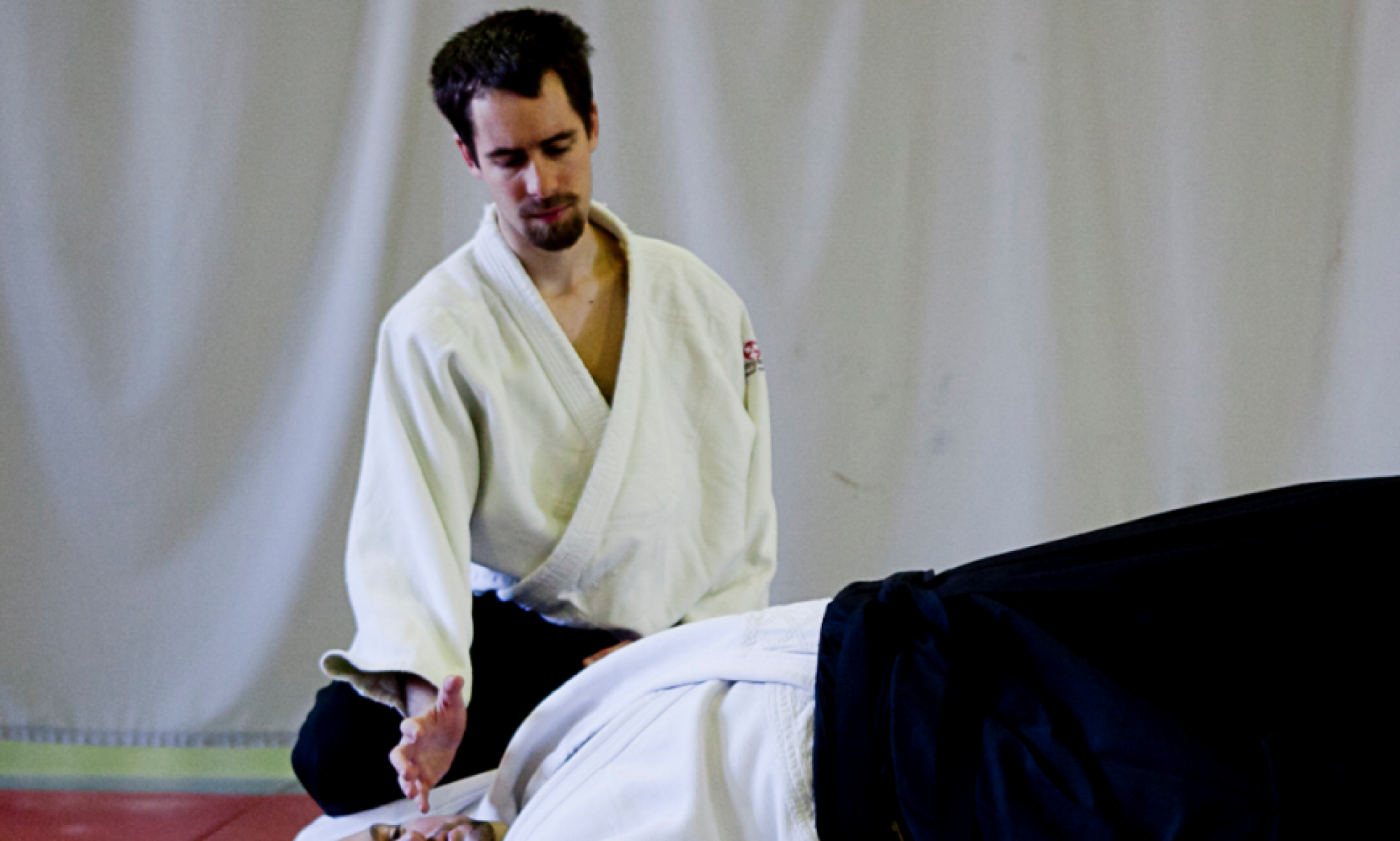This is my second blog post which was translated with the help of OpenAI’s ChatGPT. Similarly to the first one, this also required only minor adjustments, the translation itself was close to perfect. So let’s see the content:
In connection with aikido, we often hear the phrase “Aikido is the art of non-resistance.” Usually, this principle is used to explain why there are no blocks in aikido (except when there are), why we step out of the line of attack (except when we don’t), and why we try to find angles and directions in which we can move easily and which do not collide with the direction of the attack. If it were only about this, perhaps it would be more advisable to apostrophize aikido as the art of avoidance.
“The art of non-resistance” often comes up when teaching proper ukemi. We bring up many better or worse arguments why uke should not resist tori’s technique, and we spend a lot of time on how uke should move with tori to create a harmonious effect – after all, aikido is also the way of harmony, isn’t it?
When I write this blog, it’s 2022, and it has been five years since I started attending Dan Harden’s seminars and transforming my training based on his method. The October seminar is still vivid in my memory. Working with Dan is completely different from anyone I’ve ever been taking ukemi for. He moves as if I weren’t even there. One moment I think my position is strong, the next moment I’m off balance and receiving one or two signaled strikes and kicks, or finding myself three meters away. All this with just a tiny fraction of his power. I don’t feel our forces clashing, I simply move. I can’t resist anything, and the feeling of vulnerability is complete from the very first moment. It’s hard to find words for this because Dan stands far above any master I’ve met. He embodies the other, neglected aspect of the art of non-resistance in modern aikido – that in aikido, we make the attacker non-resistant through our own movement.
But perhaps 8th dan Hiroshi Isoyama expressed this experience better:
– What was it like? [Ueshiba Morihei]
– It was as if I were trying to apply a technique on a big tree. However, he was always taking proper ukemi for me, not trying to resist or cleverly escape the technique. I was like a high school student trying to put some strength into my technique, but I couldn’t.
– Why?
– I don’t know. It felt like he suppressed me while draining my strength. I couldn’t use strength. Even today, I don’t understand what happened.
– He had incredible power.
– It was superhuman power. But it wasn’t like he was tensing his muscles to create strength. It felt like strength naturally entered his body. When I felt tough, I often tried to resist him, but he didn’t pay any attention. We also tried this, but somehow always clashed with the strength of our partner, which eventually penetrated our bodies. O-sensei was never bothered. Regardless of whether we tried to resist or did nothing, O-sensei worked with the same force. It felt like his energy leaked out, but it didn’t. He was completely different in this respect.
If anyone doubts whether taking ukemi for Dan Harden is similar as it was for O-sensei, I recommend this article: https://www.aikidosangenkai.org/blog/finding-aiki-aikido-hawaii/
I think it’s important to keep in mind both aspects of the art of non-resistance – our own non-resistance and making uke non-resistant. If we are able to realize these two interpretations simultaneously (not one after the other), we can take a big step closer to realizing the power in O-sensei’s aikido.
Sources, recommended reading:
https://trueaiki.com/descriptions-of-ueshibas-aiki-compared-to-aiki-123







